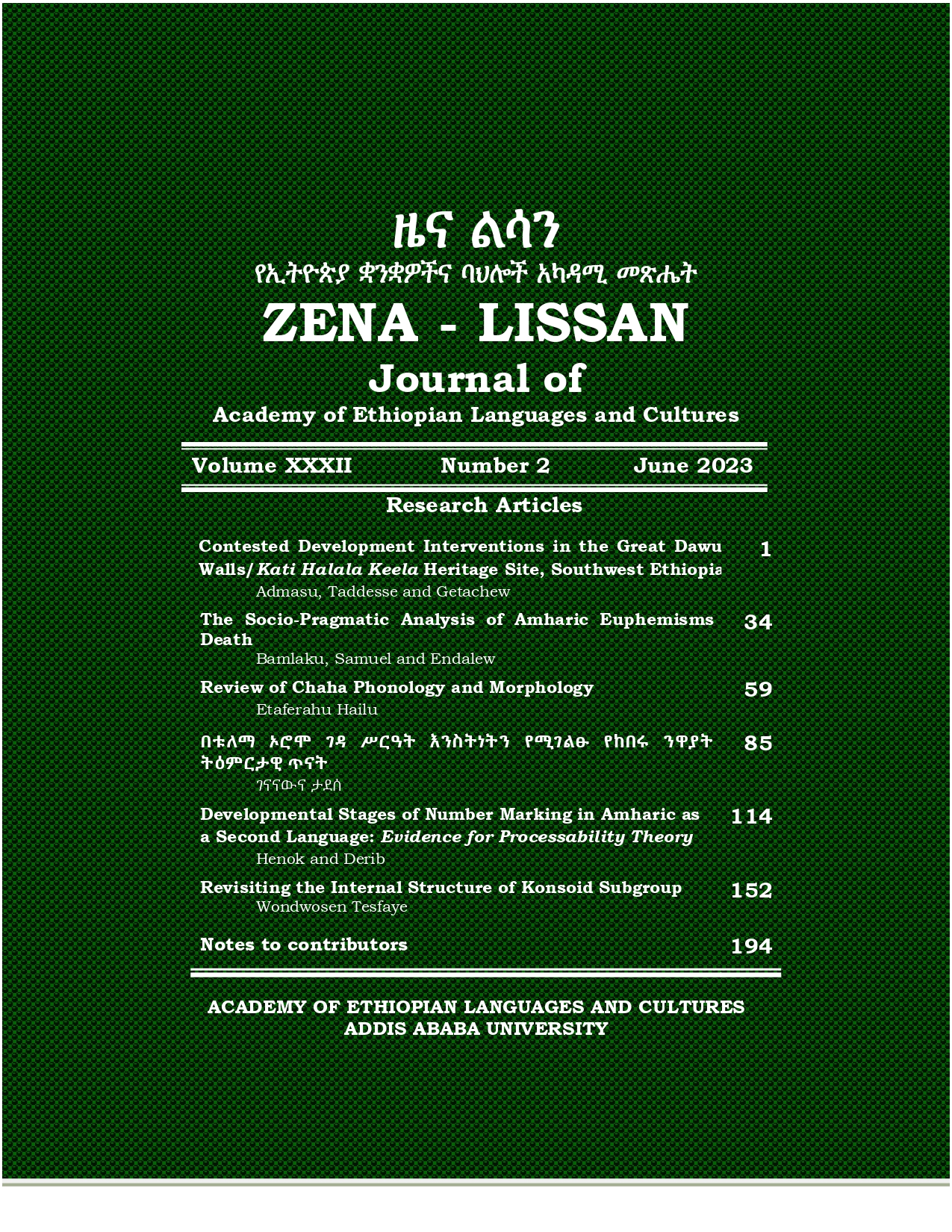Developmental Stages of Number Marking in Amharic as a Second Language: Evidence for Processability Theory
Abstract
Abstract
The aim of this article is to explore the developmental trajectories of Amharic nominal and verbal plural morphemes and to provide empirical support to the typological plausibility of processability theory. Processability theory claims that learners follow the same general developmental routes across typologically different languages (Pienemann, 1998b:2). Up to date, Processability theory has been tested by some languages for its universal applicability. This article is, thus, the only one of its kind from Ethio-Semitic languages that provides additional empirical support to PT. To facilitate interaction and get the necessary data, semi-structured interviews, picture description tasks, and spot the difference tasks were employed. By using distributional analysis and emergence criteria, the data were analyzed and the points of emergence of target structures were determined, respectively. The results show that implicationally ordered developmental routes of number agreement across three developmental stages were found in which s-procedure follows the phrasal procedure, which follows categorical procedure. This result in particular confirms the processability theory’s predictions. However, plural number subject agreement markeremerges at category levelin pro-drop context before context that requires agreement between subject and verb. This result contradicts Processability theory’s hypothesis, which states that subject agreement markers only begin to emerge at stage four.
Keywords: [Processability theory, Number marking, Morph-syntax, Developmental stage, Amharic as L2]

